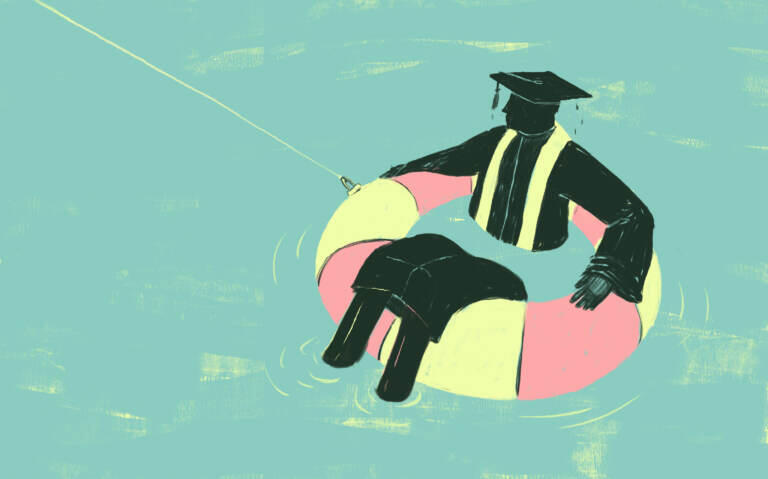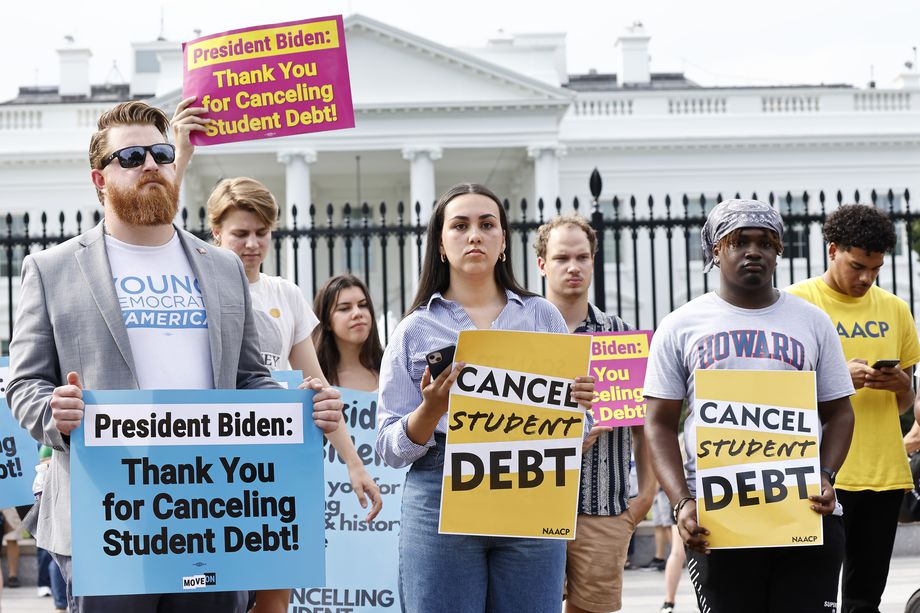Introduction
Many were told while growing up something along the lines of “Go to college and you’ll be set.” There was a promise that this would guarantee a certain quality of life along with meaningful, lucrative, and stable opportunities. The assurance made the venture seem like a solid investment in both time and money. For some, foregoing college is simply not an option. However, with the rising cost of higher education, a volatile job market, and current salaries not keeping up with inflation, some who bought into this dream via private and federal loans are having buyer’s remorse. Especially when interest is accounted for, some are even unable to afford their payments at all or may take longer than initially expected [1]. This begs the question, should the U.S. government provide student loan relief? Although this is a complex issue with many factors, there are generally two core views. One side argues “yes” or “does support” while the other argues “no” or “doesn’t support”. The stances are also generally drawn along political party lines, with the left supporting the idea more than the right. In fact, one national poll shows 58% of Democrats were in favor of relief, versus just 15% of Republicans [2].

How are news organizations reporting on this? What is the general population saying about this? Given that the dichotomy extends along political lines, are there differences in dialogue between left-leaning and right-leaning entities? Points from both sides of the topic were laid out by Becca Stanek from the Week [2]. Some of the arguments supporting student loan forgiveness were of the cruelty surrounding the structure of student loans, improving economic equity, and that the cost of college and living, even when accounting for inflation, have increased dramatically since the generation before current students and recent graduates. Some of the arguments against the idea were unfairness towards those who have paid off their loans, that it doesn’t address the root problem, and that bulk relief may benefit those who actually do not need the financial aid. Many of those with student loan repayments are overwhelmed by the system and struggling to pursue life goals they thought an education would offer them [4]. These life goals include creating emergency or retirement funds, investing, owning a home, and postponing starting a family. However, many opponents ask the question, “Where does this money come from?” A number of Republicans say that government sponsored plans could “increase the federal budget and tax costs.” There’s an echo of unfairness in increasing taxes on those who don’t have student loans or didn’t even attend college.

Is there any common ground between the two sides of the arguments? What is the “cruelty” in the system that proponents use as an argument? Similarly, what is the underlying problem in the system that won’t be solved by forgiveness that opponents use an argument? In an article published by NPR, Cory Turner investigates fraudulent colleges. The article claims that for-profit trade schools which serve almost a quarter of federal student loan borrowers account for “44%” of defaults [6]. The author cites examples of Corinthian Colleges, ITT Technical Institute, and DeVry University, whose students have “wasted loans and worthless degrees” and may have been misled by false advertising. In the case of fraud, there seems to be more bilateral support. Fraudulent colleges aside, the cost of education is still rising, “having nearly tripled since 1980”, and the back and forth on forgiveness is frustrating to both sides of the discussion [7]. Although a single cause of this increase is hard to pinpoint, some are blaming the student aid system and the educational institutions themselves. A bulk forgiveness would be costly to taxpayers and even eliminating interest could be damaging. Instead, a recommendation was made to tighten lending requirements and condition borrowing limits on a “degree’s economic returns” and a “borrower’s academic merit.”
Although this topic is highly divided along political party lines, it’s a complex issue with positive and negative sentiment stemming from facets outside of political party lines. As of late January of 2025, it was reported that Joe Biden had cancelled the student loans of “more than 5 million Americans - more than any other president in U.S. history.” This was over $180 billion in student loans [8]. However, with a change of administrations from President Biden to President Trump, the rules for debt forgiveness are tightening again. In some cases, the debt forgiveness programs are being eradicated completely. What happens to the individuals who held out on the promise of their student loans being at least partially forgiven and are now being faced with a different financial future? Although negative sentiment could still be placed along political party lines as one side is drastically changing the dynamics again, some are feeling the weight of a broken promise. Some of those who were facing financial hardships in the first place, or had been waiting on the promise of forgiveness, are now becoming the target of an administration set on collecting. For those in default, the government could begin garnishing wages and blocking other benefits some borrowers have become accustomed to. With “an average of 8.15 percent of student loan debt” in default at any given time, the government in colloquially calling in its chit. With access to some of these repayment plans being completely severed, it’s estimated that “some 8 million borrowers are in limbo” and may be facing “higher monthly costs” [9].
An aspect shared by both sides of the aisle is that government sanctioned student loan forgiveness doesn’t address the root cause of why its needed in the first place. In an article by Saddique Ansari from Economics Online, its stated that “there was a real rise of 213% in students’ average funding outlays” for traditional state colleges over the last three decades [10]. Some of the drivers of this increase referenced in the article include a decreased support from the states towards their public higher education institutions, administrative costs “outpacing” enrollment, expansion of services and amenities aimed at “enhancing the college experience” and attracting students, and the sheer available of federal student loans. The article states that the ease at which federal aid is procured has given colleges “less incentive to keep costs down”, essentially allowing them to increase attractiveness through these enhancements without considering an economic balance, especially for underrepresented classes seeking “upward mobility”. Even in the face of adversity, domestic and foreign students alike are choosing to pursue higher education in the United States. According to a 2025 ranking by The Times Higher Education, the United States was home to six out of ten of the top prestigious universities in the world. The United States is globally recognized in its academic excellence, research opportunities, and networking opportunities within its academic institutions. However, this obviously comes at a price. How do other countries with renowned higher education institutions compare? According to a 2025 ranking performed by the World Population Review, the United States has consistently fallen by international standards when it comes to education overall. The study indicates that “government spending on education has failed to keep up with inflation” and places the US at spot 31 on its list [11]. In fact, many nations within the European Union (EU) and the European Economic Area (EEA) land much higher in the rankings. Furthermore, many of these countries offer free college tuition to citizens from the EU, EEA, and Switzerland. Even if a student is not a citizen of these regions, the tuition is considerably cheaper compared to the United States [12].
When it comes to student loan forgiveness and the student debt crisis in the United States, arguments from proponents and opponents alike have validity. Progress towards a viable permanent solution depends on a willingness to confront and discuss many complex issues.